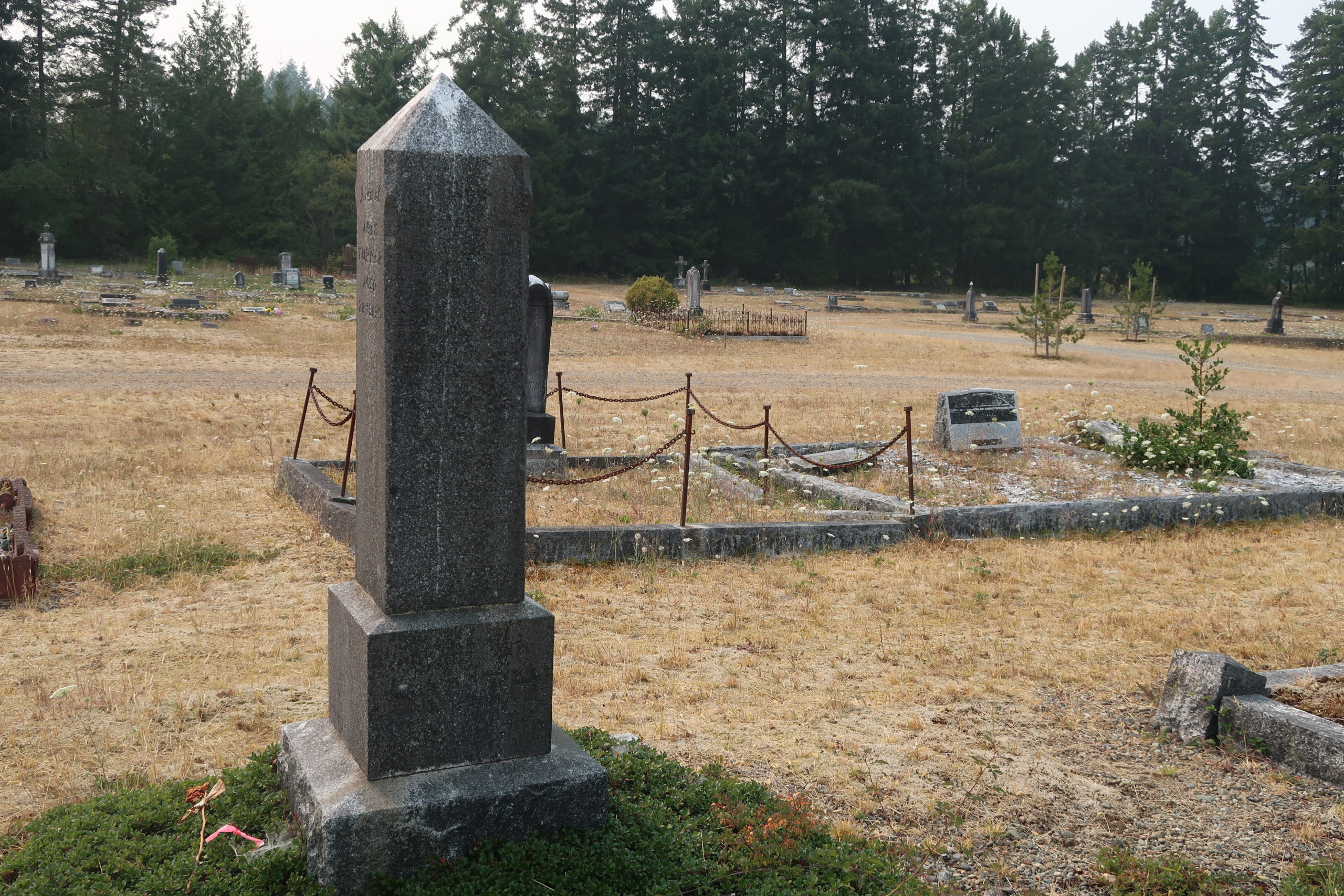Across the stone’s face, the letters have faded from view.

P. Ferguson image, August 2017
It is our second visit to Cumberland in recent times…but some 13 years ago I first walked this place to learn of those whose lives were coal. Walking, as I do, length upon length of upright and earth lain markers I read the few lines of tell – the chosen chiseled words – that some best remember and others might become inquisitive. Time has harvested many of these cut letters, taking as it can its share of stories leaving only notes and hints, the ashes of one once known, or perhaps, two or three or more.
I stand at the foot of a Smith family marker – the only sound the heat of the day.

P. Ferguson image, June 2004.
I have stood here before when the letters, though encroached upon by lichen – rain – wind – cold – heat – dust were better viewed. The letters were words then, not easily read but recorded Robert Smith killed at No. 4 Mine and John Smith killed overseas. I was struck at the time and still today by these two lives – a family’s dual tragedy, the dangers of mining, the dangers of warring – these chosen words here at SMITH. Today, Fergusons stand beside Smiths and all the while I am grateful for that one-week meander in 2004 of carved, leaded and cast letters from place to place on Vancouver Island. Headstones and memorials, study and student, teacher and taught.

P. Ferguson image, June 2004.
Whilst at Cumberland Cemetery I meet a new friend, Dave is his name, Dave Waugh, who comes for a visit curious of our interest in this stone record and so I tell him; how having been here before – before the words slipped away I had once read the words of the Smith family, one lost in the mines and one to the Great War. As the conversation continues I am grateful and respectful to hear of Dave’s interest and connection to this place and once again I appreciate, despite the sorrow, how people can be brought together, eternally attached to these places and stone records of memory. It is here at Cumberland where I feel beneath the ashes, the glowing embers of coal and memory, of good stories once spoken, of chosen chiseled words and faded letters, here amongst new friends and old.
Addendum
It is coal that brought me first to Cumberland. There is something about this town, about the men and women – families whose lives were coal. In 2004 when I stumbled upon the Smith family headstone I found connecting interests – one to the other – and one to this wanderer of the trail. it is coal that has brought me here on the trail again 19 August 2017 to No. 4 Mine.

P. Ferguson image, 19 August 2017.
Robert Smith was killed in an explosion at Comox #4 Mine, 8 February 1923 – one of 33 miners lost that day. His relative, John Alexander Smith, a former painter, of the 25th Canadian Infantry Battalion (Nova Scotia), was killed 17 August 1917 during the Battle of Hill 70, Lens, France. One of 137 soldiers of the Canadian Expeditionary Force who would not come home because of this day.
Artist and poet Kahlil Gibran once wrote, “Perhaps time’s definition of coal is the diamond”. Yet here amongst the embers, diamonds are in the rough, blackened sparkles, shining beneath the soot and elements for wanderers to find.
Previously published Pipes of War website, 23 August 2017
